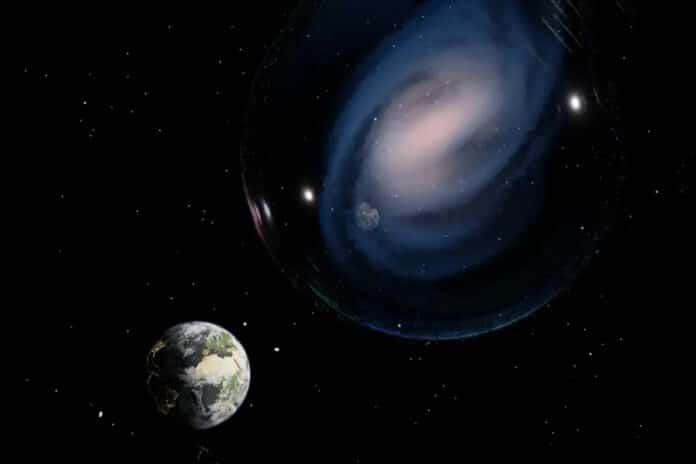Using the James Webb Space Telescope, an international team of astronomers found a Milky Way-like galaxy in the early universe. The galaxy, named ceers-2112, is the most distant barred spiral galaxy similar to the Milky Way observed to date.
It formed quickly after the Big Bang. The discovery of this galaxy suggests that early cosmic galaxies may have been just as organized as the Milky Way. This is unexpected since, in the early universe, galaxies were far more chaotic, and few of them possessed structures resembling the Milky Way.
At its center, the galaxy has a bar- a structure made of stars within galaxies. Its bar implies that galaxies evolved and organized far more quickly than we previously believed, indicating that some of our theories regarding the birth and evolution of galaxies need to be revised.
Before this, astronomers believed that galaxy evolution required billions of years to become sufficiently ordered to form bars.
However, it can occur in a fraction of that time, in less than a billion years, as demonstrated by the discovery of cheers-2112. It is believed that spiral galaxies, like the Milky Way, where stars revolve in an organized manner, are where galactic bars originate.
Coauthor de la Vega, a postdoctoral researcher in the Department of Physics and Astronomy, said, “In such galaxies, bars can form spontaneously due to instabilities in the spiral structure or gravitational effects from a neighboring galaxy. In the past, when the universe was very young, galaxies were unstable and chaotic. It was thought that bars could not form or last long in galaxies in the early universe.”
The team also estimated the redshift and properties of ceers-2112. It has a redshift of 3.
The team noted, “Taking advantage of the unprecedented spatial resolution, wide wavelength coverage, and depth provided by JWST observations, combined with HST datasets, we also derived the 2D spectral energy distribution (SED) of ceers-2112.”
“We inferred the galaxy star formation history (SFH) from detailed SED fitting (Fig. 2a) and found that it has a total stellar mass of M★ = 3.9 × 109 M⊙.”
“By comparing ceers-2112 with the assembly history of Milky Way progenitors, we demonstrated that it can be considered the furthest progenitor of the Milky Way both in terms of structure and assembly history.”
de la Vega said, “The discovery of ceers-2112 is expected to change at least two aspects of astronomy.”
“First, theoretical models of galaxy formation and evolution will need to account for some galaxies becoming stable enough to host bars very early in the universe’s history,” de la Vega said. “These models may need to adjust how much dark matter makes up galaxies in the early universe, as dark matter is believed to affect the rate at which bars form. Second, the discovery of ceers-2112 demonstrates that structures like bars can be detected when the universe was very young. This is important because galaxies in the distant past were smaller than they are now, which makes finding bars harder. The discovery of ceers-2112 paves the way for more bars to be discovered in the young universe.”
Journal Reference:
- Constantin, L., Pérez-González, P.G., Guo, Y. et al. A Milky Way-like barred spiral galaxy at a redshift of 3. Nature (2023). DOI: 10.1038/s41586-023-06636-x
